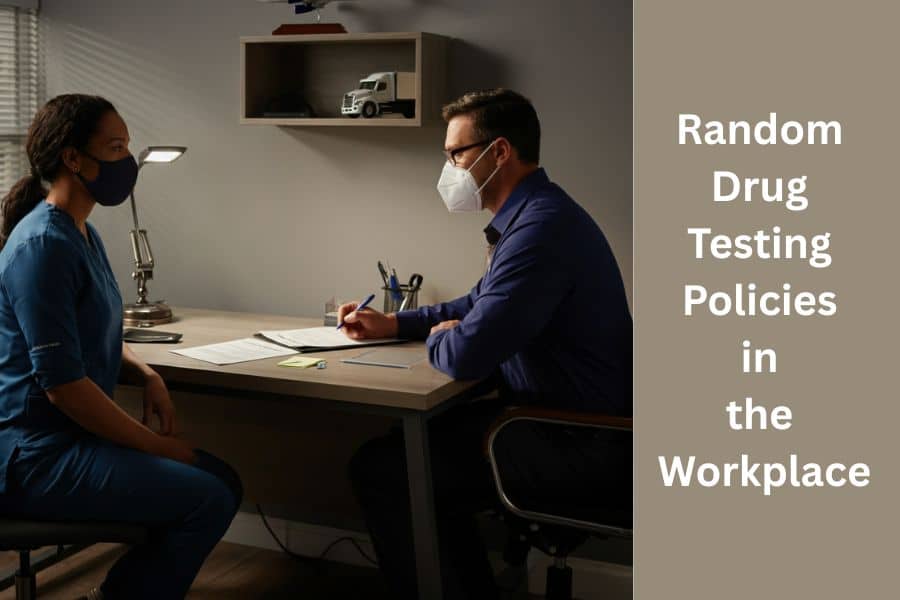Creating and maintaining a secure and productive work environment hinges on a company’s ability to establish robust policies, and random drug testing is one such policy gaining prominence. From safety-critical industries to general workplaces, random drug testing policies are instrumental in fostering accountability, deterring substance abuse, and protecting both employees and employers. This guide explores the importance of random drug testing, how it works, legal considerations, and best practices for implementation.
Why Random Drug Testing Matters
Random drug testing programs serve multiple purposes, all contributing to a safer and more efficient workplace:
1. Prevents Substance Abuse
Random drug testing acts as a powerful deterrent. The unpredictability assures employees they must be consistently compliant with workplace drug-free policies.
2. Enhances Workplace Safety
Drug and alcohol use in the workplace can lead to accidents, especially in industries with safety-sensitive roles. A strong testing policy reduces risk and protects employees from preventable harm.
3. Identifies Substance Abuse Early
Testing programs allow employers to identify employees struggling with substance abuse and direct them to support programs before major issues arise.
4. Reduces Employer Liability
Accidents caused by substance-related impairments can lead to lawsuits and financial losses. A documented program demonstrates an employer’s commitment to safety and compliance in the event of legal proceedings.
5. Promotes Productivity and Morale
Substance abuse can lead to heightened absenteeism, decreased productivity, and higher turnover rates, harming team morale and efficiency. Random testing mitigates these effects, fostering a healthier workforce.
Understanding Random Drug Testing Policies
Random Testing Mechanism
At the heart of a successful random drug testing program is the concept of unpredictability. Employees are chosen randomly through computer-generated algorithms, ensuring fairness across the workforce. This approach avoids discrimination or bias and reinforces the program’s credibility.
Notification and Testing Process
Once an employee is selected, they are notified discreetly and expected to proceed promptly to the testing facility. This minimizes tampering and ensures accurate results. Tests typically involve urine or oral fluid sampling, conducted under secure and standardized conditions. Certified labs process results and confirmatory tests are carried out for positive cases.
Types of Employees Covered
While private employers can opt for customized policies, certain industries like transportation, aviation, and construction are governed by federal regulations. The Department of Transportation (DOT), for instance, mandates random drug testing for individuals in safety-sensitive positions. Federally regulated industries require strict adherence to protocols, with documented consequences for violations.
Legal Considerations for Employers
Understanding the legal framework is critical when implementing a random drug testing policy. Employers must balance their right to ensure safety with employees’ privacy rights.
Adherence to DOT Regulations
For industries overseen by the DOT, specific rules apply. For example, employers are required to conduct annual drug and alcohol testing on a percentage of their safety-sensitive employees. The testing protocol, including substances screened and selection criteria, must align with DOT standards. Employers can refer to DOT’s random testing guidelines for detailed information.
State-Specific Laws
Testing policies must comply with state regulations, which vary widely. Some states limit or prohibit random drug testing, particularly in non-safety-related roles. Employers need to tailor their programs to meet both federal and state requirements while avoiding overreach.
Employee Rights and Transparency
Transparency is key to avoiding disputes. Employers should provide employees with written policies outlining:
- Substances that will be tested
- Consequences of positive results
- Processes for retests or appeals
Details about employee rights and legal considerations are crucial components of any well-structured plan. For privacy concerns and rights in the workplace.

Best Practices for Random Drug Testing Policies
To ensure effectiveness, fairness, and compliance, consider the following best practices when drafting and implementing your company’s random drug testing policy:
1. Develop a Comprehensive Policy
Clearly document your testing program, including processes, selection criteria, and disciplinary actions. Share this policy with employees and secure signed acknowledgments from all staff members.
2. Ensure True Randomness
Use computer-based random selection to ensure everyone in the testing pool has an equal chance of being chosen. This eliminates claims of bias and strengthens the program’s integrity.
3. Minimize Notification Time
Provide selected employees only enough time to travel to the testing facility. This limits opportunities for tampering and ensures accurate results.
4. Tailor Programs to Organizational Needs
Different industries have varying requirements. For DOT-regulated jobs, for instance, random drug testing is mandatory for roles directly linked to safety. Employers should consider the risks and job responsibilities of their workforce to determine the scope of testing.
5. Maintain Confidentiality
All employee drug testing results must remain strictly confidential, and accessible only to authorized personnel. This safeguards employee privacy and builds trust in the program.
6. Conduct Frequent Reviews
Regularly assess the effectiveness of your testing program. Stay updated on evolving state and federal laws, and revise policies accordingly to maintain compliance.
7. Engage Third-Party Administrators
Many companies collaborate with third-party administrators for tasks like random selection, testing, and compliance monitoring. Using objective, external parties can provide additional legal protection and operational efficiency.
Common Challenges and How to Address Them
Legal Risks
Missteps in implementation can result in lawsuits. To mitigate this, companies must work closely with legal counsel and ensure airtight compliance with all applicable regulations.
Employee Morale
Employees may resist or distrust the policy if not adequately informed. An educational campaign highlighting the benefits of testing for both individual and workplace safety can address these concerns.
Financial Costs
Testing programs may require significant investment, including lab fees and administrative expenses. Yet the costs are often outweighed by the benefits of reduced turnover, absenteeism, and liability risks.
Final Thoughts
A well-crafted random drug testing program is a valuable asset for organizations prioritizing safety, productivity, and compliance. By ensuring fairness, transparency, and adherence to legal guidelines, companies can foster a healthier, safer workplace environment.
If you’re considering implementing such a program, consult trusted resources like FMCSA’s Random Testing Regulations or DISA’s Drug Testing Best Practices to guide your efforts. These steps will not only protect your business but also demonstrate your commitment to employee well-being and workplace safety.
Reference Article
Pre-Employment Drug Test: A Complete Guide [2025]

Review Random Drug Testing Policies in the Workplace.